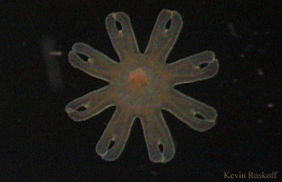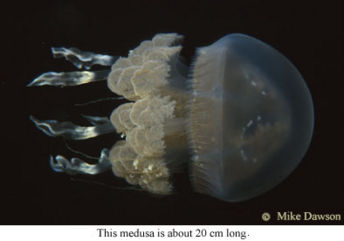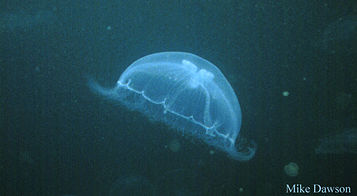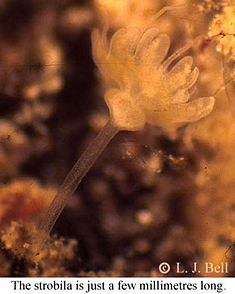Glossary: Difference between revisions
No edit summary |
(re-cat) |
||
| (2 intermediate revisions by 2 users not shown) | |||
| Line 9: | Line 9: | ||
<br> | <br> | ||
'''Medusoid:''' Having the characteristics of a medusa. ('''pictured below''') <br> | '''Medusoid:''' Having the characteristics of a medusa. ('''pictured below''') <br> | ||
[[Image:GLKMastigias.jpg|border|left|345x241px|This medusa is about 20cm long.]] | [[Image:GLKMastigias.jpg|border|left|345x241px|This medusa is about 20cm long.]] | ||
| Line 17: | Line 17: | ||
[[Image:Aurelia sp4.jpg|border|center|357x196px|The medusa stage of Aurelia.]]<br> | [[Image:Aurelia sp4.jpg|border|center|357x196px|The medusa stage of Aurelia.]]<br> | ||
<br> | <br> | ||
'''Ontogeny:''' The development and growth of an individual organism from zygote until death, often conceived as being through progressive stages. See life-history.<br> | '''Ontogeny:''' The development and growth of an individual organism from zygote until death, often conceived as being through progressive stages. See life-history.<br> | ||
| Line 39: | Line 39: | ||
<br> | <br> | ||
'''Terminal club:''' The pendulous appendage at the distal end (i.e. end farthest from the bell) of the oral arms in rhizostome medusae such as Mastigias; usually one per oral arm (i.e. eight per medusa). See an example in [[ | '''Terminal club:''' The pendulous appendage at the distal end (i.e. end farthest from the bell) of the oral arms in rhizostome medusae such as Mastigias; usually one per oral arm (i.e. eight per medusa). See an example in [[Mastigias]]. | ||
<br> | <br> | ||
'''Trait: '''A particular feature or character; a distinguishing quality; a characteristic; an attribute.<br> | '''Trait: '''A particular feature or character; a distinguishing quality; a characteristic; an attribute.<br> | ||
[[Category:Articles]] | |||
Latest revision as of 01:37, 4 January 2011
This glossary contains definitions of scientific terms used in The Scyphozoan. If you cannot find a word you did not understand, please write to the webmaster, including the word and the URL for the page on which it occurs. We will add it to the glossary. Thank you!
Ephyra: The earliest medusoid stage. pl. ephyrae. The ephyra is just a few millimeters in diameter, free swimming, and preys on smaller plankton.(pictured)
Life-history: The development and growth of an individual organism often presented as a series of stages characteristic of a particular species or group of species. Reproduction by mature organisms begins the life-history again, leading to the idea of a life-cycle. See life-cycle in Ecology section.
Medusoid: Having the characteristics of a medusa. (pictured below)
Ontogeny: The development and growth of an individual organism from zygote until death, often conceived as being through progressive stages. See life-history.
Strobilation: The process by which a polyp differentiates and asexually produces new medusae. See also ephyra.
(pictured)
Synapomorphy: A shared derived character; a character that is shared by two or more taxa (e.g. species) and evolved in their common ancestor, thus indicating their common evolutionary descent (and distinguishing them from other taxa that do not have this character state).
Taxa: plural of taxon.
Taxon: The named taxonomic unit (e.g. Aurelia aurita, Ulmaridae, Semaeostomeae, Scyphozoa) to which individuals or groups of species are assigned. pl. taxa.
Terminal club: The pendulous appendage at the distal end (i.e. end farthest from the bell) of the oral arms in rhizostome medusae such as Mastigias; usually one per oral arm (i.e. eight per medusa). See an example in Mastigias.
Trait: A particular feature or character; a distinguishing quality; a characteristic; an attribute.



